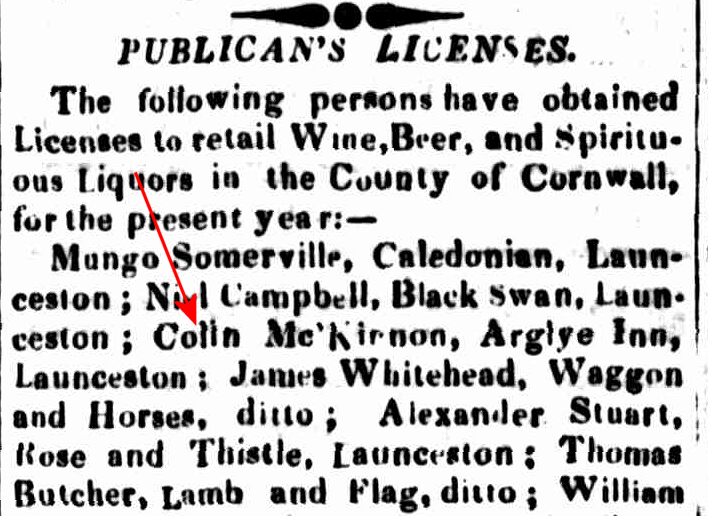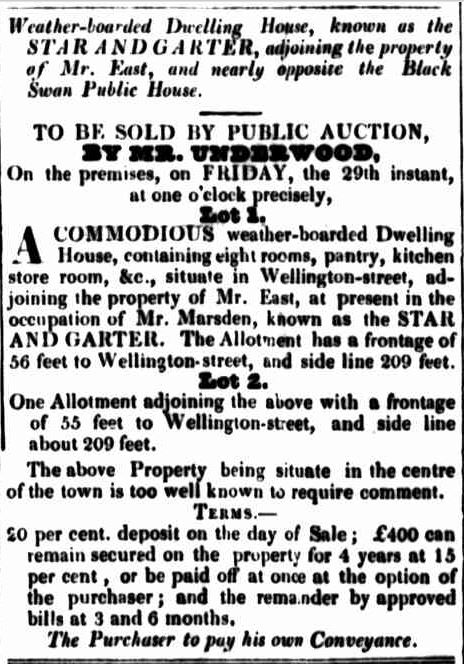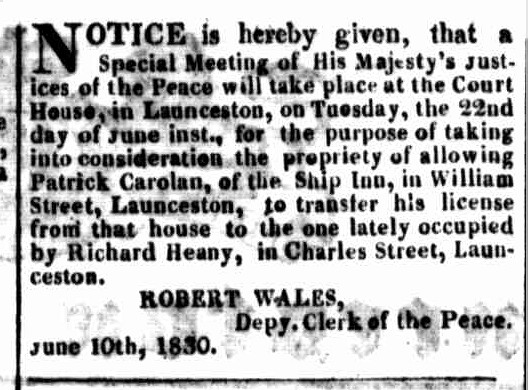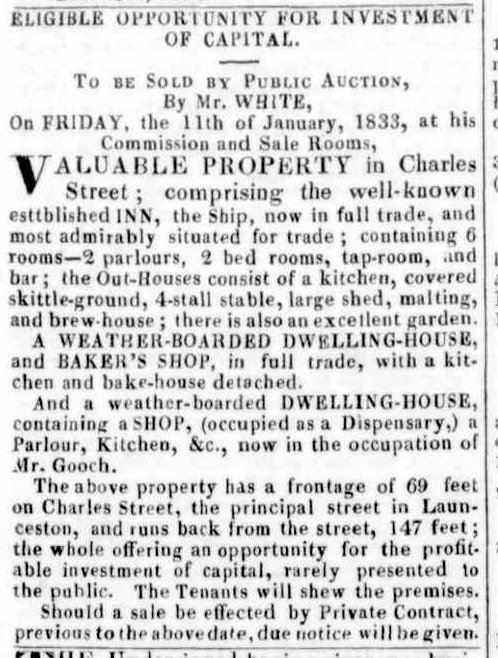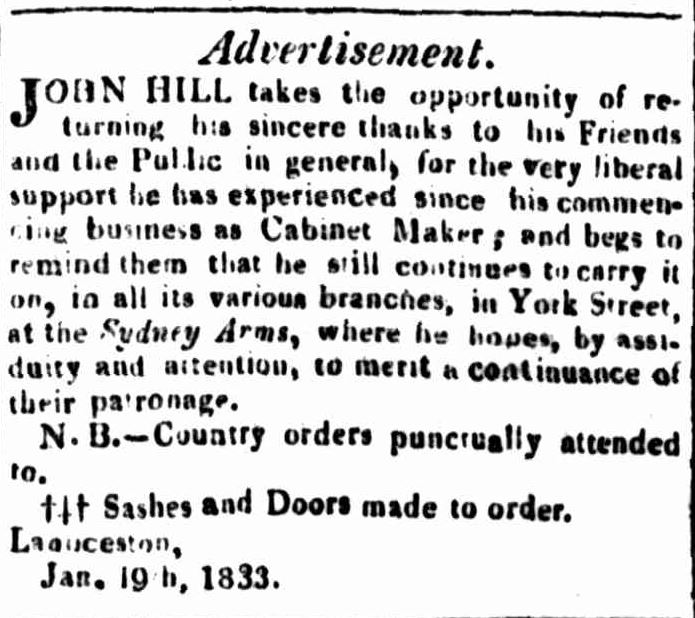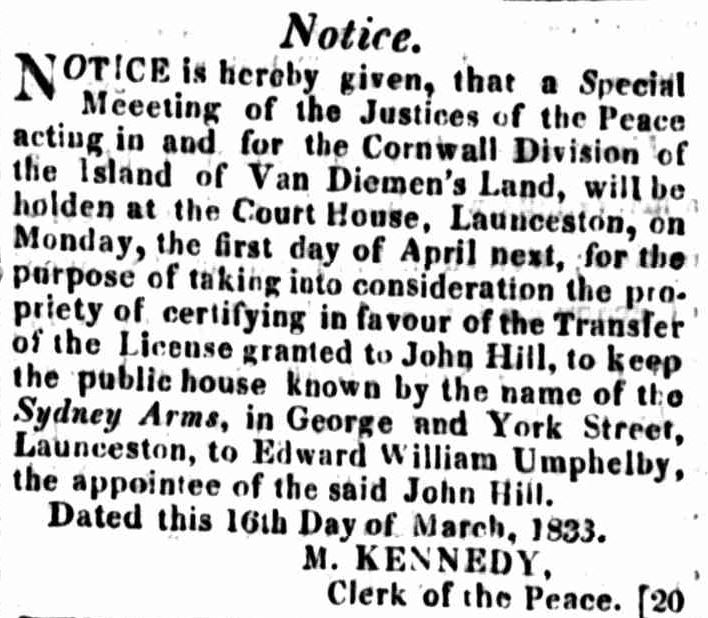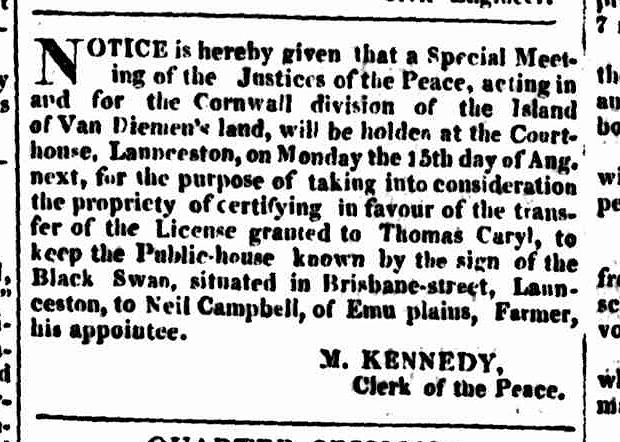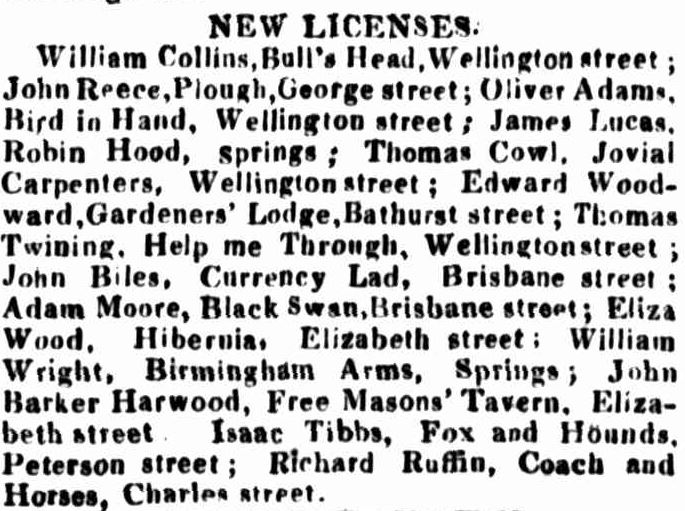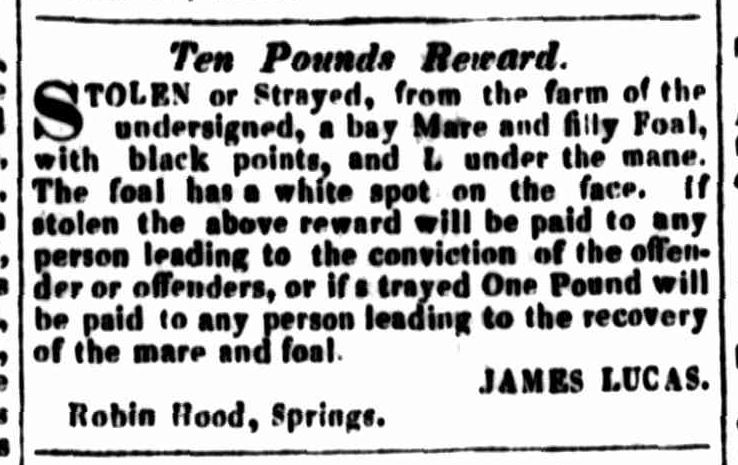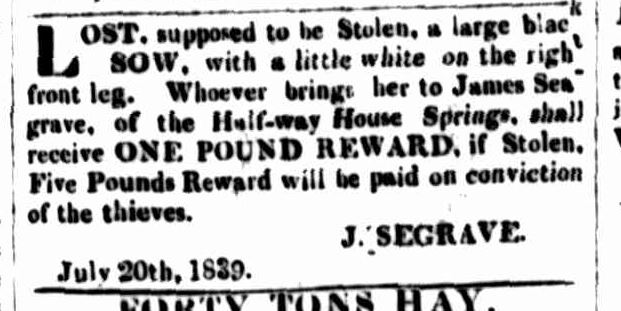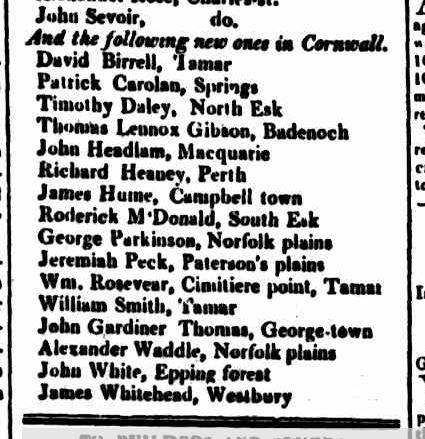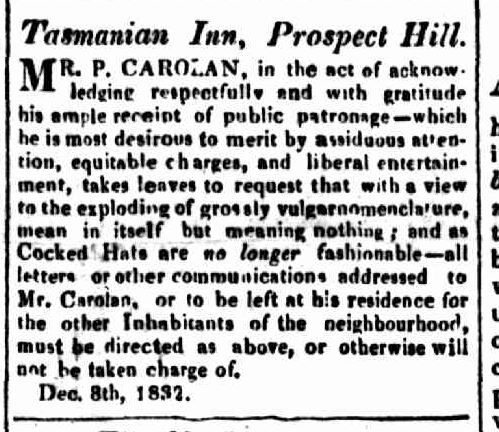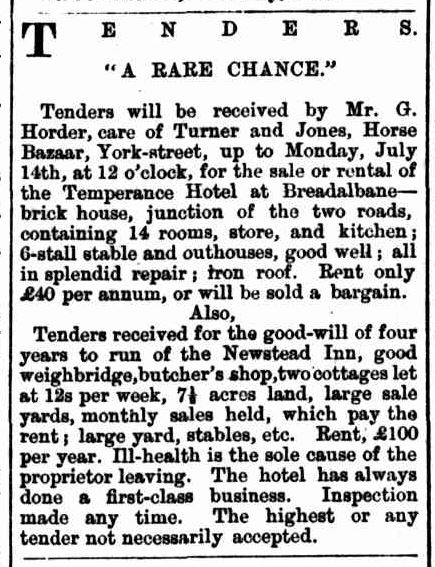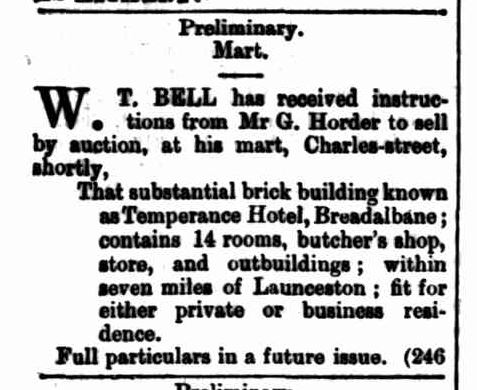Breadalbane, 1850s
Cannot find much about this, other than two short news items at the bottom of the page. Was it located in the building that had originally been the Albion Inn?
In 1849, “Timothy Sullivan applied for a license at the Cocked Hat, district of Morven. The premises for which applicant applied were lately occupied by Mr. Pilbeam, but Mr. Pilbeam finding the premises inconvenient, obtained permission from Mr. Wales, the assistant P. M., to remove to an adjoining house … The land originally belonged to Mr. Scott, who had not resided in the colony for many years, it was rented to Mr. Solomon, and by him sub-rented to Mr. Pilbeam, who had at a great expense erected the house to which he had lately removed. (Cornwall Chronicle, 9 May 1849)
Unlicensed hotels (temperance hotels, coffee houses etc) are often established in establishments that have been refused licenses. The two contemporary stories (below) have the coffee house as belonging to Mrs Pilbeam and Mr Scott, which supports it being the house referred to in the rejected application.
A 1949 story about the Woolpack Inn being redeveloped says:
The Woolpack Inn, earlier known as the Breadalbane Coffee House, was built in the late 30’s on land granted in 1838 to Thomas Scott, one of Van Diemen’s Land’s earliest settlers. He was a land surveyor from County Barwick, Scotland, and he apparently conceived Breadalbane as the site for a big township. He sub divided much of his 584 acres and named the area the Cocked Hat Hill Estate.
Advocate, 16 November 1949
————————————
Cocked Hat — The draft of the bill for dividing the colony into electoral districts, and providing representatives for the same, leaves out entirely the small village at the Cocked Hat–so that the houses of Mrs. Pilbeam–the Breadalbane Coffee-house, and another, are beyond the pale of electoral privileges
Cornwall Chronicle, 30 April 1851
FIRE–About two o’clock this morning, the Breadalbane Temperance Coffee House, at the Cocked Hat was destroyed by fire the walls only being left standing. The property belongs to Mr. Thomas Scott: the Surveyor, now in England.
Colonial Times, 20 January 1853
